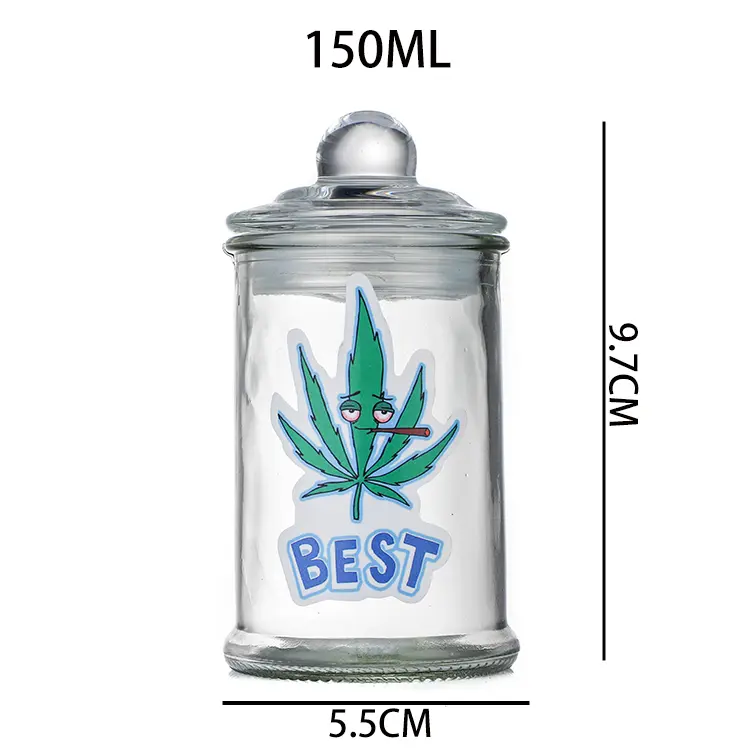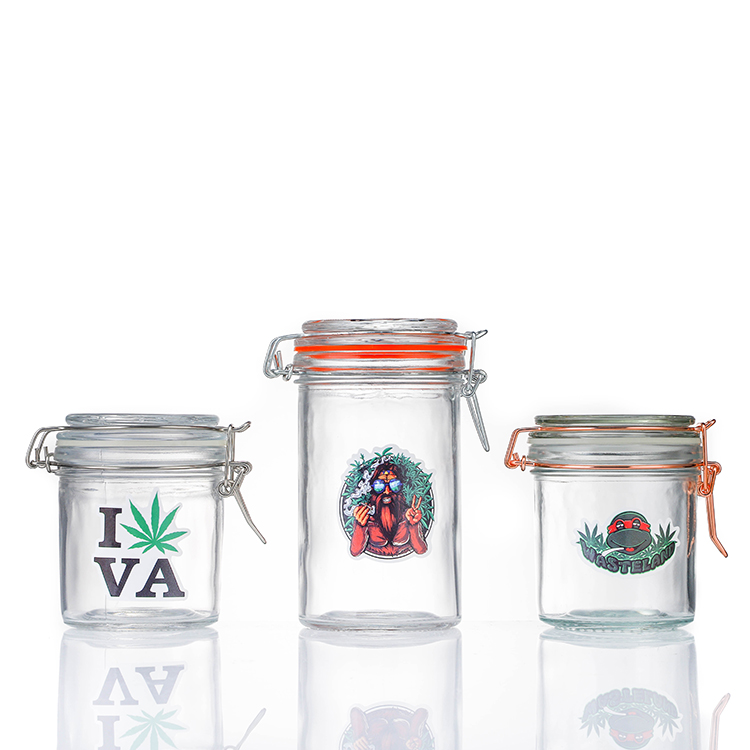The Ultimate Guide to Child-Resistant Packaging: Protecting Our Children, Ensuring Compliance, and Boosting Your Brand!
02-08-2025
Hey there! I'm Allen, from China, and I've spent years in the glass **container** business, helping brands like yours meet the highest standards for product safety and **compliance**. This guide is all about **child-resistant packaging**, and why it's *absolutely* essential, especially for **cannabis products** and a wide range of other goods. We'll cover everything from **child-resistant packaging requirements** to the **types of child-resistant packaging** available, and how to choose the **best child-resistant** options for your products. Ready? Let’s dive in and make sure your products are safe and **compliant**!
## 1. Why is the **Importance of Child-Resistant Packaging** So Critical Today?
The **importance of child-resistant packaging** can't be overstated, especially in today's world where a wide variety of potentially harmful products are readily available. From **cannabis products** to everyday **household products**, we need to be vigilant about protecting our children. **Child-resistant packaging** is more than just a legal requirement; it's a crucial element in preventing **accidental** **ingest** and reducing the risk of **child poisoning**.
Think about this: According to the Consumer Product Safety Commission ([https://www.cpsc.gov/](https://www.cpsc.gov/)), thousands of children under five years of age are treated in emergency rooms each year due to **accidental** poisonings. Many of these cases involve **household products** that weren't packaged in **child-resistant containers**. **Child-resistant packaging** aims to reduce these risks by making it significantly **difficult for children** to **open the package**, while still allowing adults to use the products easily.
I've seen firsthand how effective good **child-resistant packaging** can be. Over the years, I've worked with countless companies that prioritize **child safety**, and the positive impact is undeniable. By choosing the right **child-resistant packaging solutions**, you're not just meeting a **regulatory requirement** – you're actively contributing to the well-being of children everywhere.

## 2. What are the Key **Child-Resistant Packaging Requirements**?
So, what exactly are the **child-resistant packaging requirements** you need to know? These requirements are primarily set by the **Consumer Product Safety Commission** (CPSC) and are outlined in the Poison Prevention Packaging Act (PPPA). The primary goal is to ensure that **child-resistant packaging** is effective at preventing **children under five years** from opening the package and **ingesting** a potentially **toxic or harmful amount** of the product within a reasonable amount of time.
Here's the gist: **Child-resistant packaging** must be designed in a way that **children under five years** of age find **difficult for a child** to **open the package** within a certain time frame, while adults should **able to open the package** relatively easily. The regulations specify that at least 85% of **children under five years of age** shouldn't **able to open the package** in a 10-minute test period, and at least 80% of adults must be able to **open the package** within 5 minutes.
This is where rigorous testing comes in. **Child-resistant packaging** undergoes testing to ensure it meets these criteria. **Child-resistant packaging testing** involves both children and adults to verify that the **child-resistant functionality** works as intended. When you select a **container**, you're choosing the first line of defense for **child safety**.
## 3. Navigating the Different **Types of Child-Resistant Packaging**: Which is Right for You?
There are many **types of child-resistant packaging**, each with its own unique design and mechanism. Choosing the right one depends on the product, the desired aesthetic, and of course, **packaging requirements**. From my experience, here are some of the most common options:
* **Child-Resistant Bottles and Jars:** These are a popular choice for liquids, creams, and even solid products like pills or tablets. They often feature specialized **child-resistant closures**, like squeeze-and-turn caps or push-and-turn mechanisms.
* **Child-Resistant Tubes:** These are a great option for creams, gels, and ointments. **Child-resistant tubes** typically use a combination of special closures and tamper-evident seals.
* **Child-Resistant Mylar Bags:** Commonly used for **cannabis flower**, edibles, and other products. They often incorporate a zipper mechanism that is **difficult for children** to operate.
* **Child-Resistant Cartridge Tubes:** Designed specifically for cartridges of various types, they provide both **child-resistant** and tamper-evident protection.
* **Child-Resistant Containers:** These are general terms for any **container** designed to protect your product and your customers.
The best choice will depend on the specific needs of your product. Consider factors like product viscosity, size, and the intended consumer.
## 4. How Does **Child-Resistant Technology** Work?
**Child-resistant technology** is all about creating barriers that are easy for adults to overcome but challenging for children. The core concept involves a combination of mechanics and design that make it **difficult for children** to access the contents.
The most common method of **child-resistant technology** involves **child-resistant closures**. These can take various forms, but they all share a common principle: requiring multiple actions to open the **container**. For example, a "squeeze-and-turn" cap requires the user to simultaneously squeeze the sides of the cap while turning it. This is **difficult for children** who often lack the dexterity and coordination required. Another example is a push-and-turn mechanism. Other examples include, but are not limited to, the following:
* **Tamper-evident packaging** is used in conjunction with **child-resistant packaging** to show that the package hasn’t been opened.
* Reclosable **child-resistant mylar bags** employ a zipper design, which is made **difficult for a child** to open.
* **Child-resistant containers** often integrate a unique mechanism that makes it hard for kids to open.
The key is to create a system that **children under five years** find **difficult for a child** to understand and operate while still being straightforward for adults. The mechanics are often simple, but the design makes all the difference!

## 5. What are the **Child-Resistant Closures**? A Deep Dive into Caps and Lids.
**Child-resistant closures**, such as **child resistant caps** and lids, are the heart of **child-resistant packaging**. They are designed to prevent children from accessing the contents of a **container**. Choosing the right closure is vital, so let's delve into the most popular types:
* **Squeeze-and-Turn Caps:** These are among the most common and effective **child-resistant closures**. The user must squeeze the sides of the cap while turning it to open the **container**.
* **Push-and-Turn Caps:** These closures require the user to push down on the cap while simultaneously turning it. This is another simple yet effective mechanism.
* **Latching Mechanisms:** Found on some bottles and **jars**, these closures have a locking mechanism that must be disengaged before the **container** can be opened.
* **Specialized Closures:** Some products might require custom closures with unique designs to meet specific needs, such as those found in **child-resistant tubes** or other specialized **containers**.
All these mechanisms must meet rigorous testing standards. I have seen it firsthand! When it comes to manufacturing, ensure that **child-resistant closures** are made with high-quality materials to maintain their effectiveness over time. A well-designed closure not only protects children but also enhances your brand's reputation by showing you prioritize safety and care.
## 6. **Child-Resistant Packaging** for **Cannabis Products**: The Industry Standard.
The **cannabis industry** has seen a huge surge in demand for **child-resistant packaging**. With the legalization of **cannabis products** in many regions, the need for **child-resistant cannabis packaging** has never been greater. The reason is simple: these products can pose a serious risk to children if they are **accidental** ingested.
**Cannabis products** come in a wide range of forms, including:
* **Cannabis flower**
* Edibles (gummies, chocolates, baked goods)
* Concentrates (oils, waxes)
* Vapes (cartridges, disposable pens)
Because of this, the **cannabis industry** relies heavily on various forms of **child-resistant packaging**, including **child-resistant mylar bags**, **child-resistant tubes**, and **child-resistant containers**. **Packaging requirements** are particularly stringent, with many states and regions having specific guidelines for **cannabis products** that must be met.
**Compliance** is absolutely essential when **manufacturing and selling cannabis products**. Businesses must adhere to strict regulations to ensure the safety of children and avoid legal penalties. As an experienced manufacturer, I always recommend that you partner with **child-resistant packaging manufacturers** who specialize in the **cannabis industry** and understand the complexities of the regulations.
## 7. **Child-Resistant Packaging** for **Household Products**: Keeping Homes Safe.
While **cannabis products** are a significant area, **child-resistant packaging** is equally important for **household products**. Many everyday items in our homes can pose a risk to children, especially if ingested.
**Household products** that often **require child-resistant packaging** include:
* Medications (prescription and over-the-counter)
* Cleaning supplies (detergents, disinfectants)
* Pesticides and herbicides
* Chemicals (e.g., bleach, drain cleaners)
The threat of **child poisoning** from these products is real, and **child-resistant packaging** plays a crucial role in reducing this risk. As a **container** provider, I always consider the safety of children. The **Poison Prevention Packaging Act** (PPPA) was specifically designed to address the need for **special packaging** for potentially dangerous **household products**. So it's essential to choose **child-resistant packaging** that is appropriate for the specific product.
## 8. How to Choose **Child-Resistant Packaging** That Looks Good and Works Even Better (Packaging Design).
Choosing the right **child-resistant packaging** involves more than just functionality. **Packaging design** also plays a vital role in making your products appealing and effective in the market. Here's what I've learned:
* **Aesthetics:** Don't sacrifice style for safety. **Packaging design** can be attractive and **compliant** at the same time. Consider the colors, shapes, and overall look of the **container** to match your brand.
* **Branding:** **Child-resistant packaging** offers the opportunity to reinforce your brand identity. Ensure that the packaging design aligns with your company's values and messaging.
* **Materials:** Choose materials that are both durable and aesthetically pleasing. Glass bottles, for example, can be elegant and provide a premium feel, while plastic **containers** offer flexibility and cost-effectiveness.
* **Functionality:** The packaging must be easy for adults to use. Ensure that the **child-resistant functionality** doesn't compromise the user experience.
* **Tamper-Evident Seals:** Use tamper-evident features, which will showcase the product's integrity and enhance security.
From my experience, the best **packaging design** combines safety, functionality, and aesthetics. It's about finding a balance that protects the consumer while also representing your brand in the best possible light.
## 9. How Can You **Ensure Compliance** with **Child-Resistant Packaging** Regulations?
**Compliance** with **child-resistant packaging** regulations is non-negotiable. Failing to meet these requirements can lead to serious legal consequences, product recalls, and damage to your brand's reputation. So, how do you **stay compliant**?
* **Understand the Regulations:** The first step is to thoroughly understand the relevant regulations. Stay updated on any changes or new requirements by monitoring the **Consumer Product Safety Commission** and other regulatory bodies.
* **Choose the Right Packaging:** Select **child-resistant packaging** that is designed specifically for your product and that meets all **packaging requirements**.
* **Testing and Certification:** Ensure that your chosen packaging has been tested and certified by a reputable third-party laboratory to meet **child-resistant packaging testing** standards. This is critical! Look for **cpsc-certified child-resistant packaging** whenever possible.
* **Supplier Due Diligence:** Work with **child-resistant packaging manufacturers** who have a proven track record of producing **compliant packaging**. Ask for certifications and documentation to verify their adherence to the regulations.
* **Internal Quality Control:** Implement internal quality control measures to ensure that the packaging is correctly assembled and that the **child-resistant functionality** is working as intended.
* **Stay Informed:** Regulations and guidelines can change, so you need to stay informed. Regularly review the latest **regulations for child-resistant packaging**.
By following these steps, you can significantly minimize the risk of non-compliance and protect your business from potential liabilities.
## 10. Where to Find Reliable **Child-Resistant Packaging Manufacturers** and Suppliers?
Finding a reliable **child-resistant packaging manufacturers** and suppliers is key to a successful product launch. You need a partner who understands the regulations, offers high-quality products, and provides excellent customer service.
* **Online Directories:** Online directories can be a good starting point for finding potential suppliers. Look for those who specialize in **child-resistant packaging solutions**.
* **Industry Trade Shows:** Exhibitions can give you a great opportunity to connect with **child-resistant packaging companies** in person. This allows you to inspect the products firsthand and talk to representatives.
* **Referrals:** Ask for recommendations from other businesses in your industry. Referrals can often lead to trusted and reliable suppliers.
* **Experience and Reputation:** Evaluate the supplier's experience and reputation. Check their online reviews and ask for references.
* **Certifications and Compliance:** Verify that the supplier is **compliant** with all relevant regulations and that their products are certified.
* **Customization:** Look for suppliers that offer customization options, such as **custom child-resistant packaging**. This can help you differentiate your products in the market.
* **Communication and Support:** Choose a supplier that offers excellent communication and support. You need a supplier you can rely on to answer your questions and address any issues promptly.
Choosing the right supplier is a long-term partnership. A good supplier will be invaluable in helping you meet your safety goals and grow your business!
## Conclusion: Key Takeaways for **Child-Resistant Packaging**
Let's recap the most important things to remember:
* **Child-resistant packaging** is essential for protecting children from **accidental** poisonings and ensuring **child safety**.
* The **Consumer Product Safety Commission** (CPSC) and the **Poison Prevention Packaging Act** (PPPA) set the standards and **packaging requirements**.
* There are many **types of child-resistant packaging**, from bottles and **jars** to tubes and bags.
* **Child-resistant closures** play a crucial role in making it **difficult for children** to access the contents.
* **Compliance** with regulations is absolutely essential, particularly for **cannabis products** and **household products**.
* Choose a reliable **child-resistant packaging manufacturers** and supplier.
* Consider the aesthetics and branding in your **packaging design** to create an appealing and effective product.
* Use of **child-resistant packaging** is designed to protect children from potentially harmful substances found in products.
By prioritizing **child-resistant packaging**, you're not only meeting legal obligations – you are actively contributing to the safety and well-being of children. Let's work together to make sure our products are safe and our children are protected!
If you have questions or need help with your **child-resistant packaging** needs, don't hesitate to reach out. I, Allen, am here to help.








